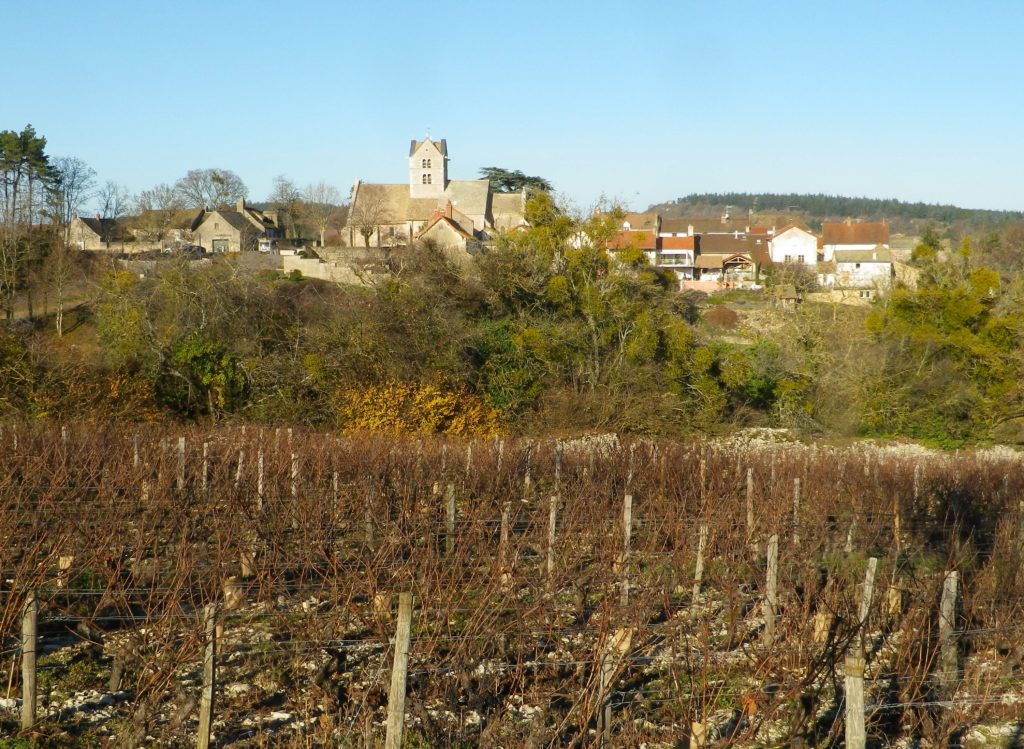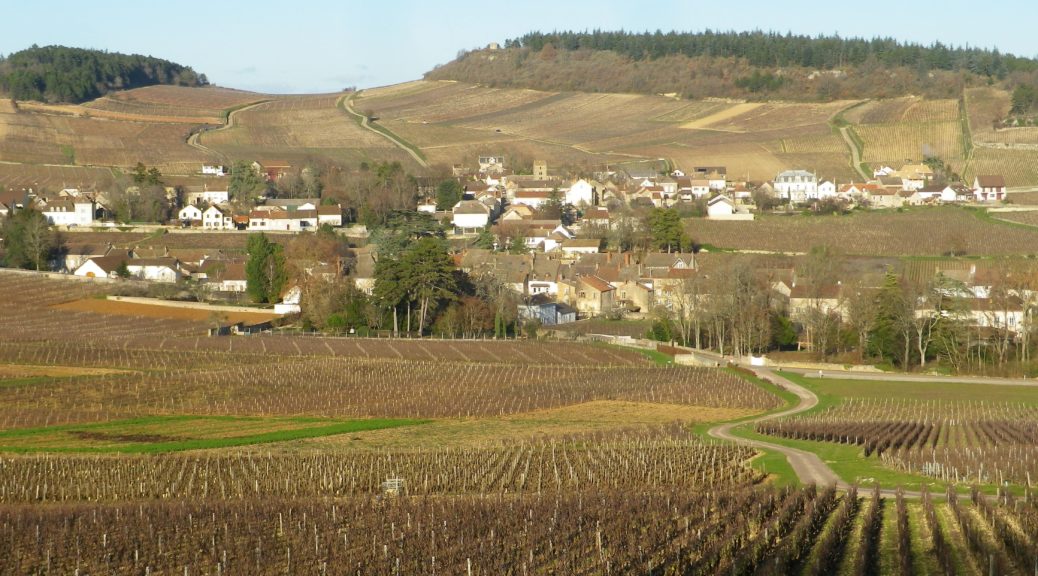Mercurey, named after the Roman God Mercury, god of commerce trade and travelers, was a fortuitous discovery for this traveler of wine country. Both the village and the eponymous appellation lie in the Cote Chalonnaise sub-region of the Burgundy wine region. The village made its entry into history as a way-stop on the Roman trade route leading to Autun from Chalon-sur-Saone, graced by a small temple to the god of trade. Presumably, this route proceeded along the same straight trajectory as the modern road through the center of town, alongside a steam. But the village’s real piece of luck was to be set in natural amphitheater. While the road follows the stream in the bottom land, vines cover the slopes all around.
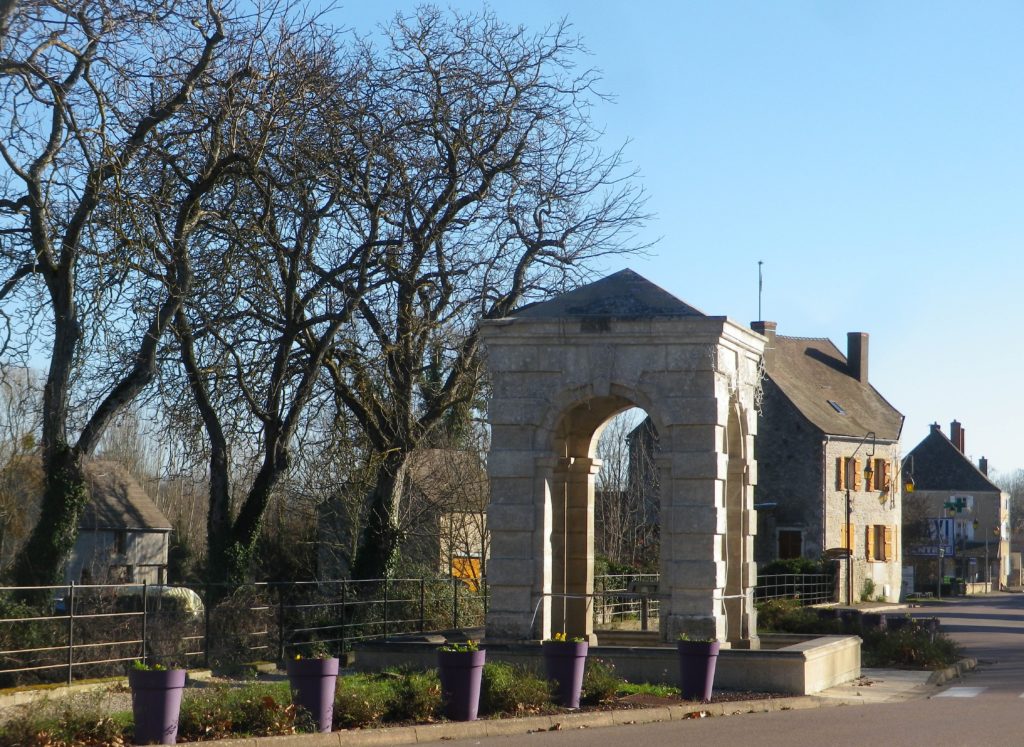
Vines were here even before the Romans. From then until today, viticultural and vinicultural practices have only improved, to the point that nowadays, the small Mercurey appellation, with its many premier cru, is famous for rich, powerful Pinot Noir wines, at prices much lower than Pinot Noir wines from nearby Cote d’Or. Thus, I wanted to taste these wines, and hike through parts of the Mercurey AOC with its very diverse soils and ideal geography.
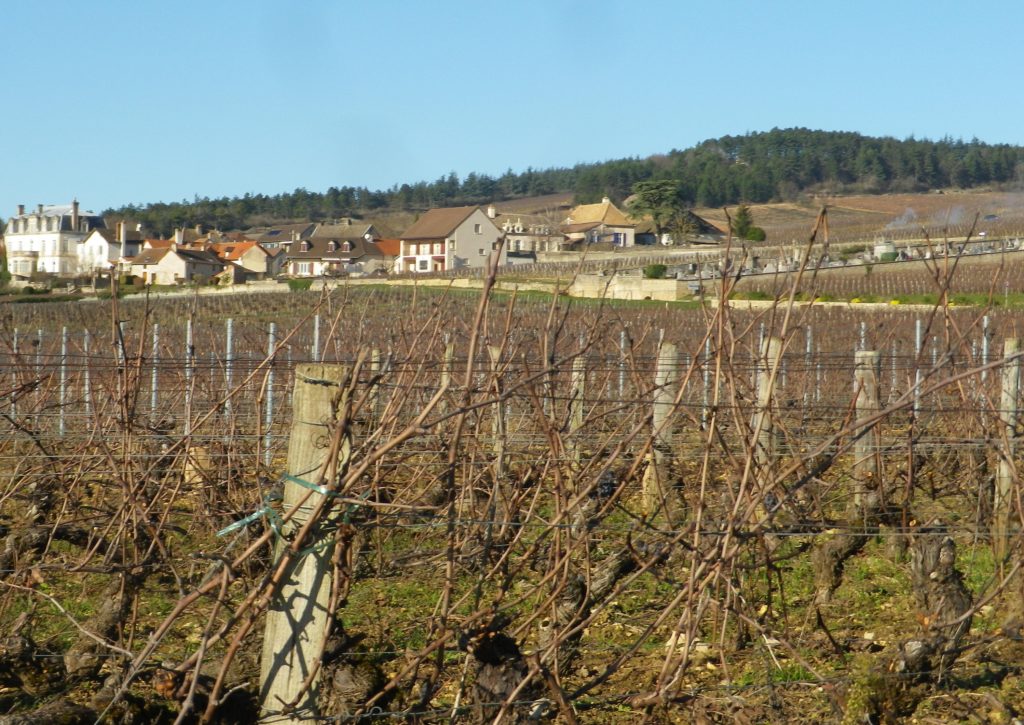
The Mercurey trail covers this appellation’s heart quite well. It officially begins in the town center. Houses, shops, etc., line the main road, rarely more than one or two deep. Vineyards begin just behind them. Thus, I quickly came to the first premier cru, Les Byots, and began to climb the slopes of the north side of the amphitheater. From the high point of the trail, the topography came into relief. The sight was impressive, as vines covered a vast area of the entire bowl laid out before me.
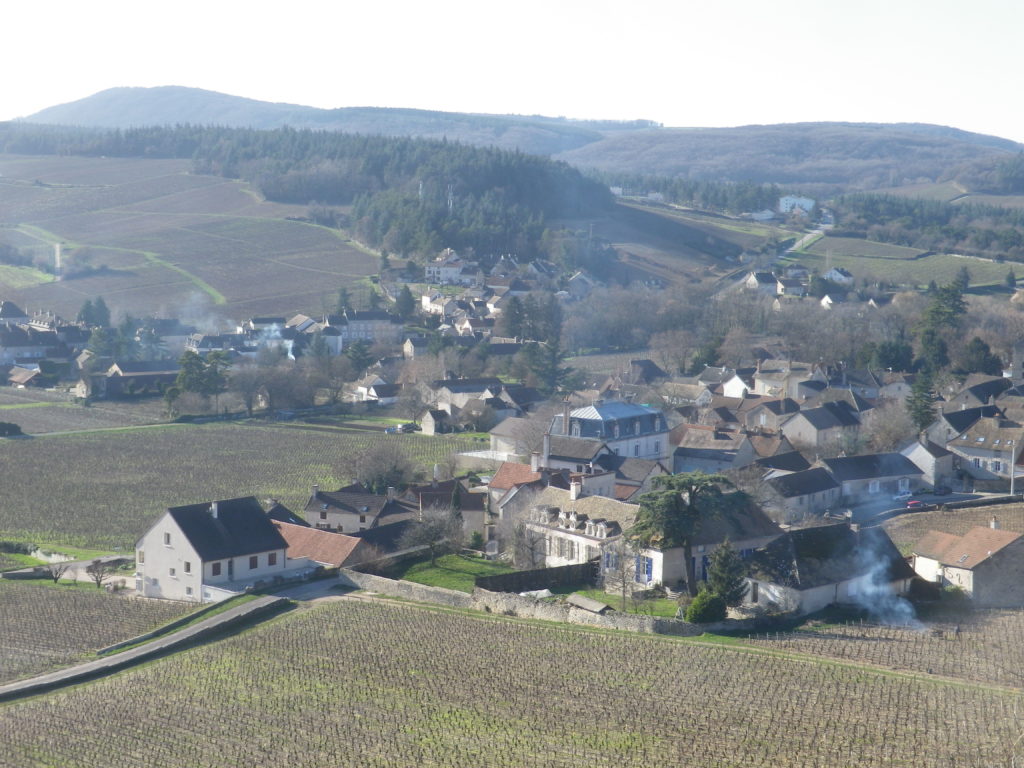
A nice aspect of this trail though, was that it also followed through woods, sited mostly on top of the rim of the bowl. Throughout the trail, be it woods or vineyards or village, there were panels explaining various aspects of Mercurey’s vines, or geology or history. Given that it has over 2,000 years of documented history, there was a lot to cover.
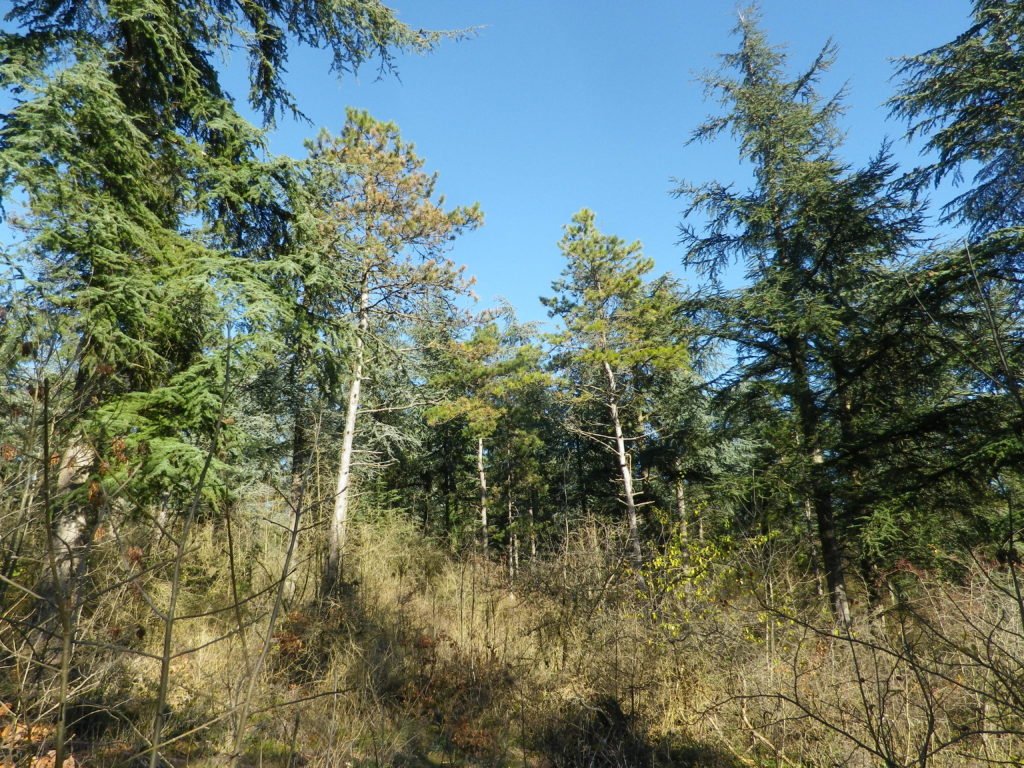
The panels whetted my appetite to learn more. The chateau of Montaigu, which the trail passes, is now a hulking collection of ruins partly buried under vegetation. It was originally begun in the 900s to be able to surveil the old Roman route below. Although the temple to Mercury, believed to lie under the current church in Mercurey, is not visible today, the church of Saint Symphorien had a story to tell, as well as sights to see. It is located in the hamlet of Touches, serenely sitting atop a hill, bathed in golden sunlight late in a winter afternoon.
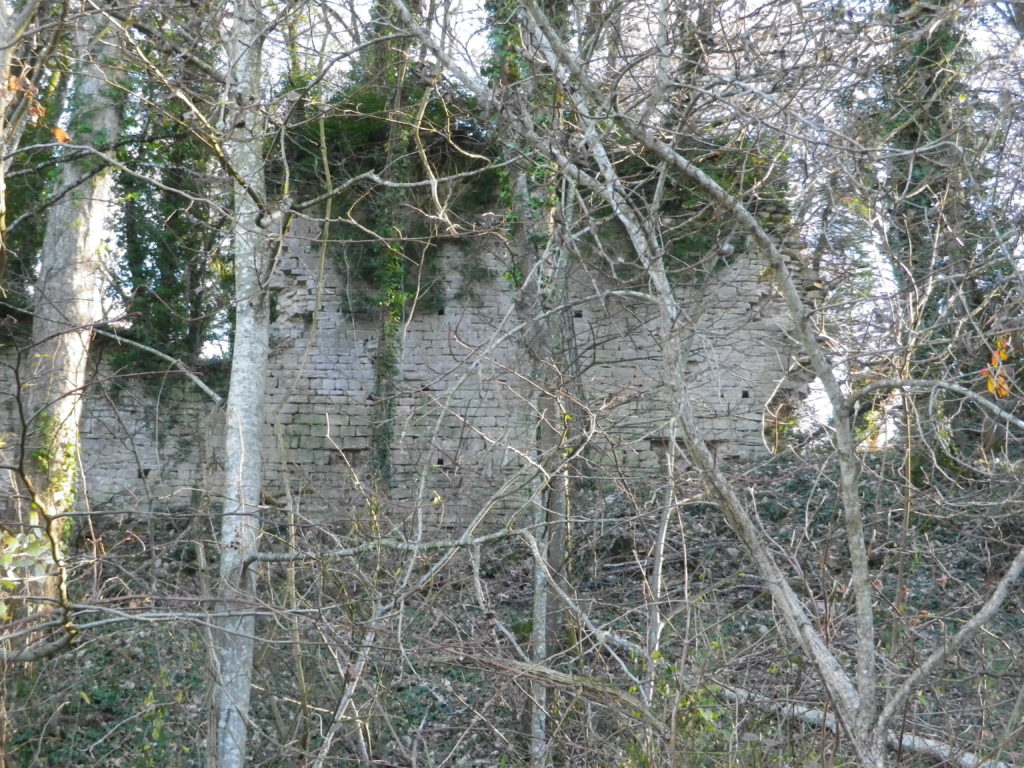
Heading toward Touches, just after the enclosed vineyard of the Clos des Montaigus, a panorama of the Cote Chalonnaise region opened up. The views were impressive from this section of the trail, reaching from these Cote Chalonnaise hills, over vineyards, even past the city of Chalon-sur-Saone, the largest city in the department. On a clearer day, the hills of the Jura, on the other side of the Saone River valley, undoubtedly would have been visible.
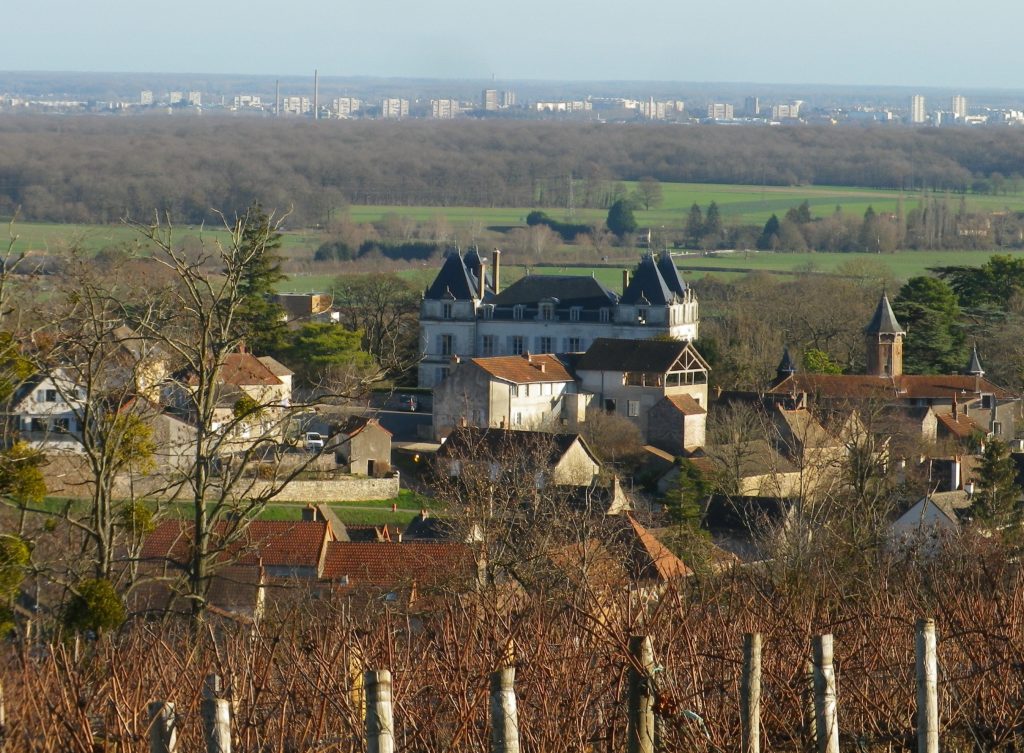
From Touches, the trail led downhill on a gentle decline through vineyards. On reaching the town hall on the Grande Rue, the circuit closes. Several wineries were on this stretch, providing opportunities to stop, to learn about, and taste the wonderful wines, possibly among the ambrosia of the gods, from this fascinating and appealing appellation.
